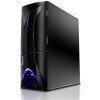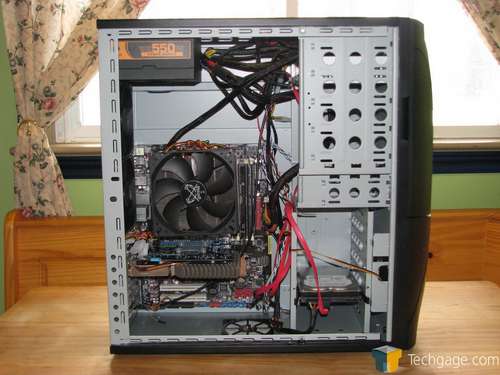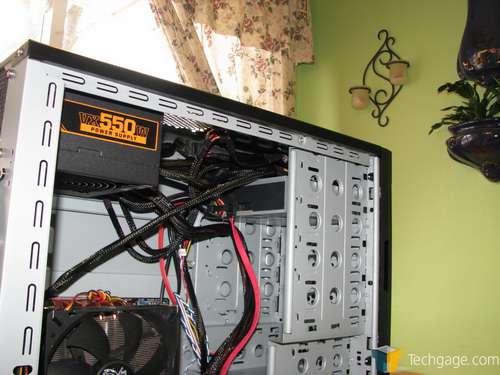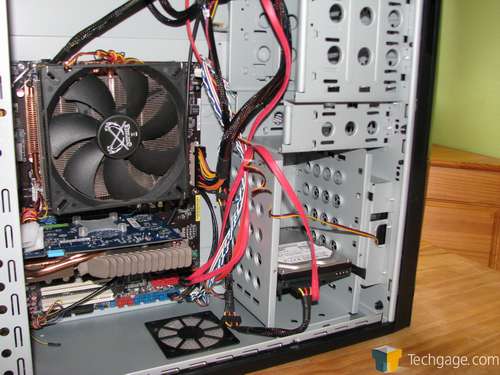- Qualcomm Launches Snapdragon 4 Gen 2 Mobile Platform
- AMD Launches Ryzen PRO 7000 Series Mobile & Desktop Platform
- Intel Launches Sleek Single-Slot Arc Pro A60 Workstation Graphics Card
- NVIDIA Announces Latest Ada Lovelace Additions: GeForce RTX 4060 Ti & RTX 4060
- Maxon Redshift With AMD Radeon GPU Rendering Support Now Available
NZXT Zero 2 Full-Tower

NZXT has impressed us time and time again with their unique chassis designs and attention to detail, so when we saw that they were offering a $100 full-tower with a fully customizable cooling system, we had to check it out. With a clean design and lots of available space, did NZXT create a a must-have for the value-conscious consumer?
Page 2 – Installation, Temperature Testing
For my testing I used a new program called OCCT 3.0. Not only does this simple program push the CPU to the brink of a meltdown through the use of LINPACK testing for Intel processors, it also turns up the juice on your GPU. It automatically maintains graphs of temperatures throughout your testing. I highly recommend you try it out on your own for your testing needs. I always run all my tests 3 times and take an average just to weed out any erroneous results. My ambient temperature is kept at a near constant 68°F (20°C) year round as my test bed PC is in my basement. There are no fans or heat vents in the area of the test platform.
|
Component
|
Model
|
| Processor |
Intel Core 2 Extreme QX9650 – Quad-Core, 3.0GHz, 1.30v
|
| Motherboard |
ASUS P5Q PRO – P45-based
|
| Memory | |
| Graphics | |
| Audio |
On-Board Audio
|
| Storage |
Hitachi 160GB
|
| CPU Cooler | |
| Power Supply | |
| Et cetera |
I use a static overclock and settings for all my testing. Stock testing is done with all settings in the motherboards BIOS to Auto. Overclocked testing is done by turning the CPU multiplier to 11x and manually setting the Vcore to 1.275v as well as enabling line load option. This results in a processor frequency of 3.67GHz with 1.25v Vcore as reported by CPU-Z in Windows. The video card is by nature of being fanless does not over clock enough to change the results so it remains at stock speeds through all testing. This is by no means the absolute maximum clocks, they are just meant to add extra stress to the components to simulate a potential overclock obtainable by most people.
Installation was a straight-forward affair. There was plenty of room for my hands and the extra spacing between the motherboard and power supply made attaching the CPU power cable a no-brainer. Unfortunately it seems that there was no thought on wire management. There are no holes in the motherboard back plate to hide anything, making it necessary to run everything in the open. There was only a single included wire tie with no other fastening devices anywhere to be seen. There are places you could zip tie things down for some cleanliness but I only use what is included to build up the test platform so what you see is what you get (read: MESSY!).
I had to rely on a trick that I was happy to forget in order to stash all the extra wiring from my non-modular power supply. I mount my DVD burner in the second slot from the top and that will give you a place to stuff all that extra cabling. Not the neatest method by a long shot but it is effective.
In all fairness I had to include a close up of the motherboard area to show that the mess is not as bad as it seems in the above picture. Lack of routing area is not an uncommon issue in lower-priced cases but I would like to see it a thing of the past. Sloppy wiring can kill airflow.
Here are my test results:

Overall I was happy with the CPU results. Sadly, I had to stop the GPU testing as it was only ½ hour into a one hour run and the temperature hit 90°C and was still going up. In all fairness, the 8600GTS we run is fanless, but this does show the weaknesses of the stock cooling. Without a doubt, a few 120mm fans would have prevented this.
Something else was very much lacking during all my testing. I have to say this is possibly the quietest chassis that has graced my desk in some time. Sure the fans were all slow speed and quiet but that is not the whole picture. Hard drive and ODD noise were also muffled and kept to a minimum. I attribute this to the thickness of the steel as well as the heavy plastic front panel.
Support our efforts! With ad revenue at an all-time low for written websites, we're relying more than ever on reader support to help us continue putting so much effort into this type of content. You can support us by becoming a Patron, or by using our Amazon shopping affiliate links listed through our articles. Thanks for your support!







